The Catalyst Killing - [10]
In contrast to his impassioned response to questions about Falko Reinhardt and Marie Morgenstierne, Anders Pettersen’s reaction to my question about the split between the group and Miriam Filtvedt Bentsen was unexpectedly cool. He shook his head thoughtfully and commented that he had been surprised when she got up and left, but that afterwards it had only served to strengthen a suspicion that he had had for some time.
Anders Pettersen gave me a meaningful and loaded look when he said this. His expression then became mildly patronizing when I asked what he meant by it. It had been clear to him and the other members of the group that they were being watched by the police security service from as early as 1968. However, even though they were on their guard, they had not noticed any direct surveillance. It had also been clear to Anders that there was an informant within the group who was reporting directly to the police – and he had come to believe that Falko shared this suspicion in the months before he disappeared.
Anders Pettersen had spent a lot of time pondering the mole theory after Falko went missing. His suspicion had focused on Miriam, who was also the most critical of the political stance that he and Falko had taken. The night that Falko had disappeared was the only time that Anders Pettersen could remember the otherwise so calm Trond Ibsen losing control; whereas Miriam, who was the youngest, had remained bizarrely unruffled throughout the night. When, at a later date, she stood up and left the group, he had taken that as confirmation that his theory was right.
Having said that, he added slowly and somewhat reluctantly that there was not necessarily any direct link between the supposition that Miriam Filtvedt Bentsen had spied on the group until she left in spring 1969, and Marie Morgenstierne’s dramatic death a little more than a year later. Marie’s death seemed more likely to be connected to Falko Reinhardt’s disappearance, though Anders was unable to say how. It was Miriam Filtvedt Bentsen who claimed to have seen both the masked face in the window that evening and the shadow of a person out in the storm later that night. He advised me to take both of these incidents with a pinch of salt.
Anders Pettersen added in conclusion that he was pretty sure that the police security service, and therefore, naturally, the CIA, knew a considerable amount – if not everything – about the murder and the disappearance. And if I could get anything out of them, then perhaps something positive might come out of what was otherwise a tragic case. He also agreed with the others who had been present that the meeting the day before had been uneventful. He claimed to have seen Marie Morgenstierne for the last time outside the meeting place. They had waved goodbye to each other as usual as he got on his bike and she set off towards the station.
By the time I left Anders Pettersen, I was even more intrigued by the group and its members. And even more curious about Miriam Filtvedt Bentsen, the only person I had not yet met of the four remaining who had been out in the storm that night in Valdres. I reckoned that it would be easier to find her in her room, or at the SPP office later in the day, than to run around looking in the university libraries. Furthermore, I had some important telephone calls to make. So I drove straight to the main police station from Grefsen and arrived back at around half past two.
IX
Marie Morgenstierne’s family had still not been in touch. And her father Martin Morgenstierne was still not answering the telephone, even though I had now called around ten times. It was starting to be a significant problem that we had not managed to contact the deceased’s closest family. The priest had knocked on Martin Morgenstierne’s door around midnight the night before and then again at half past seven in the morning, without finding any sign of life.
Given the time of year, it seemed likely that Martin Morgenstierne was either abroad or at a cabin without television, radio or a telephone. His employer was most likely to know where he was. As there were still not so many bank managers in Oslo, I asked one of the secretaries to go through the list and ring all of the banks in the city, if necessary.
In the meantime, I myself called the number provided for Falko Reinhardt’s parents in Grünerløkka. Here the telephone was answered on the third ring. An earnest woman’s voice announced ‘Reinhardt’. I introduced myself and said that if she and her husband were at home today, I would very much like to come and speak to them in connection with the murder of Marie Morgenstierne. She replied equally earnestly that she and her husband had heard about the murder on the radio, but did not know that it was Marie Morgenstierne who had been killed until just now. She added that since their son’s disappearance, they were generally always at home.
There was silence for a moment. I asked if it would be suitable to come at either four or five o’clock. She replied, still very serious, that I could come at four, or at five, or whenever I liked. I said that I reckoned it would be sometime between four and five. She said that they would be happy to talk to me, but did not sound as though she meant it. Then she put the phone down before I had a chance to thank her.
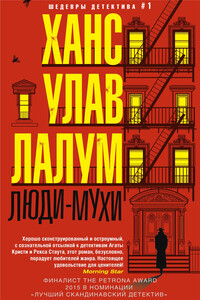
Убит бывший лидер норвежского Сопротивления и бывший член кабинета министров Харальд Олесен. Его тело обнаружено в запертой квартире, следов взлома нет, орудие убийства отсутствует. На звук выстрела к двери Олесена сбежались все соседи, но никого не увидели. Инспектор уголовного розыска Колбьёрн Кристиансен считает, что убийство, скорее всего, совершил кто-то из них. Более того, он полагает, что их показания лживы.
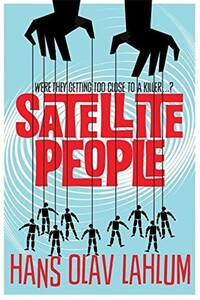
A gripping, evocative, and ingenious mystery which pays homage to Agatha Christie, Satellite People is the second Norwegian mystery in Hans Olav Lahlum's series. Oslo, 1969: When a wealthy man collapses and dies during a dinner party, Norwegian Police Inspector Kolbjorn Kristiansen, known as K2, is left shaken. For the victim, Magdalon Schelderup, a multimillionaire businessman and former resistance fighter, had contacted him only the day before, fearing for his life. It soon becomes clear that every one of Schelderup's 10 dinner guests is a suspect in the case.
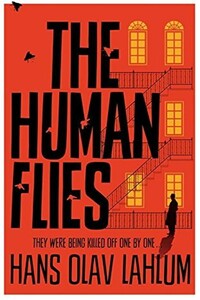
Oslo, 1968: ambitious young detective Inspector Kolbjorn Kristiansen is called to an apartment block, where a man has been found murdered. The victim, Harald Olesen, was a legendary hero of the Resistance during the Nazi occupation, and at first it is difficult to imagine who could have wanted him dead. But as Detective Inspector Kolbjorn Kristiansen (known as K2) begins to investigate, it seems clear that the murderer could only be one of Olesen's fellow tenants in the building. Soon, with the help of Patricia – a brilliant young woman confined to a wheelchair following a terrible accident – K2 will begin to untangle the web of lies surrounding Olesen's neighbors; each of whom, it seems, had their own reasons for wanting Olesen dead.
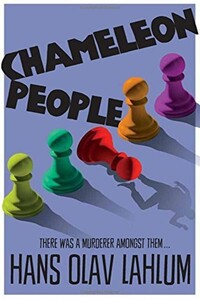
From the international bestselling author, Hans Olav Lahlum, comes Chameleon People, the fourth murder mystery in the K2 and Patricia series.1972. On a cold March morning the weekend peace is broken when a frantic young cyclist rings on Inspector Kolbjorn 'K2' Kristiansen's doorbell, desperate to speak to the detective.Compelled to help, K2 lets the boy inside, only to discover that he is being pursued by K2's colleagues in the Oslo police. A bloody knife is quickly found in the young man's pocket: a knife that matches the stab wounds of a politician murdered just a few streets away.The evidence seems clear-cut, and the arrest couldn't be easier.
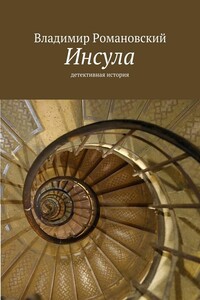
Детективная история, произошедшая в Санкт-Петербурге. Обычные люди в необычных обстоятельствах. Любовь, ненависть, жадность, драки и власть.
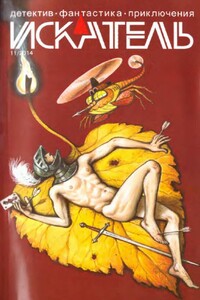
«ИСКАТЕЛЬ» — советский и российский литературный альманах. Издаётся с 1961 года. Публикует фантастические, приключенческие, детективные, военно-патриотические произведения, научно-популярные очерки и статьи. В 1961–1996 годах — литературное приложение к журналу «Вокруг света», с 1996 года — независимое издание.В 1961–1996 годах выходил шесть раз в год, в 1997–2002 годах — ежемесячно; с 2003 года выходит непериодически.Содержание:Анатолий Королев ПОЛИЦЕЙСКИЙ (повесть)Олег Быстров УКРАДИ МОЮ ЖИЗНЬ (окончание) (повесть)Владимир Лебедев ГОСТИ ИЗ НИОТКУДА.
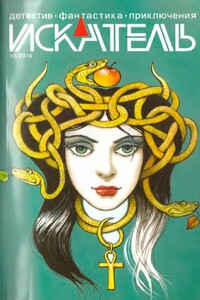
«ИСКАТЕЛЬ» — советский и российский литературный альманах. Издается с 1961 года. Публикует фантастические, приключенческие, детективные, военно-патриотические произведения, научно-популярные очерки и статьи. В 1961–1996 годах — литературное приложение к журналу «Вокруг света», с 1996 года — независимое издание.В 1961–1996 годах выходил шесть раз в год, в 1997–2002 годах — ежемесячно; с 2003 года выходит непериодически.Содержание:Олег Быстров УКРАДИ МОЮ ЖИЗНЬ (повесть);Петр Любестовский КЛЕТКА ДЛЯ НУТРИИ (повесть)
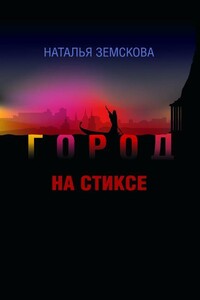
Наталья Земскова — журналист, театральный критик. В 2010 г. в издательстве «Астрель» (Санкт-Петербург) вышел её роман «Детородный возраст», который выдержал несколько переизданий. Остросюжетный роман «Город на Стиксе» — вторая книга писательницы. Молодая героиня, мечтает выйти замуж и уехать из забитого новостройками областного центра. Но вот у неё на глазах оживают тайны и легенды большого губернского города в центре России, судьбы талантливых людей, живущих рядом с нею. Роман «Город на Стиксе» — о выборе художника — провинция или столица? О том, чем рано или поздно приходится расплачиваться современному человеку, не верящему ни в Бога, ни в черта, а только в свой дар — за каждый неверный шаг.
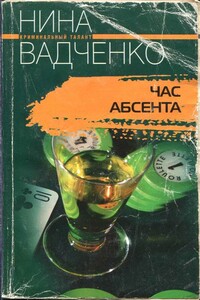
А ведь все так невинно начиналось! Четыре подружки коротали вечерок с бутылочкой «зеленого дьявола» и вели милую дамскую беседу о том… как бы им «грамотно» отправить на тот свет ненавистного шефа. Почему бы не помечтать о приятном в теплой дружеской компании? Все бы ничего, да только шефа вскоре действительно нашли мертвым, к тому же кто-то снял на видео посиделки четырех любительниц абсента. Впрочем, они и сами друг друга теперь подозревают. И распутать этот клубок противоречий по силам только их старой знакомой, неугомонной журналистке Инне Пономаренко…
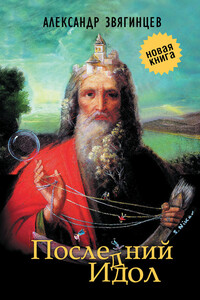
В сборник «Последний идол» вошли произведения Александра Звягинцева разных лет и разных жанров. Они объединены общей темой исторической памяти и личной ответственности человека в схватке со злом, которое порой предстает в самых неожиданных обличиях. Публикуются рассказы из циклов о делах следователей Багринцева и Северина, прокуроров Ольгина и Шип — уже известных читателям по сборнику Звягинцева «Кто-то из вас должен умереть!» (2012). Впервые увидит свет пьеса «Последний идол», а также цикл очерков писателя о событиях вокруг значительных фигур общественной и политической жизни России XIX–XX веков — от Петра Столыпина до Солженицына, от Александра Керенского до Льва Шейнина.